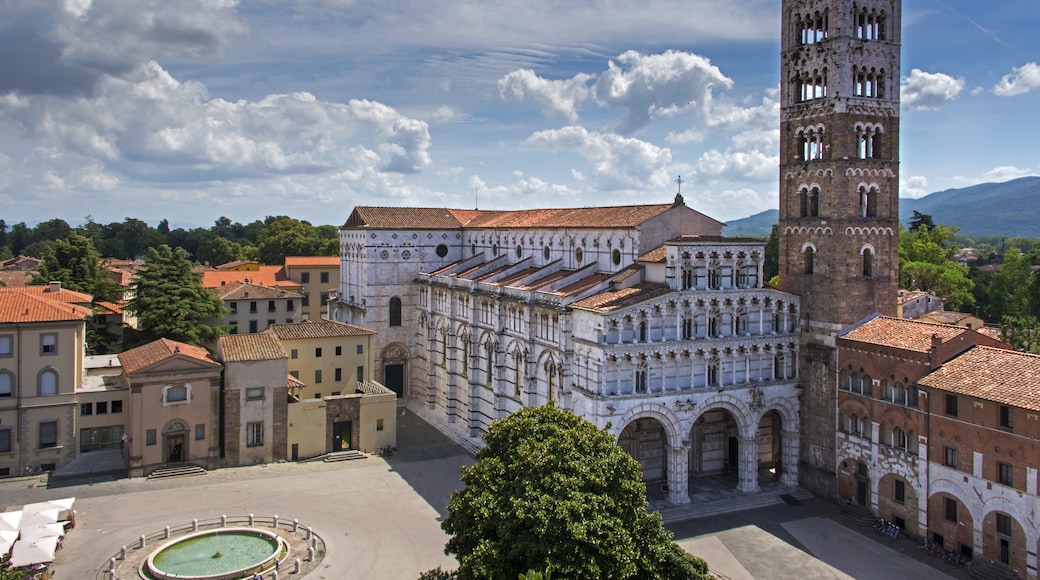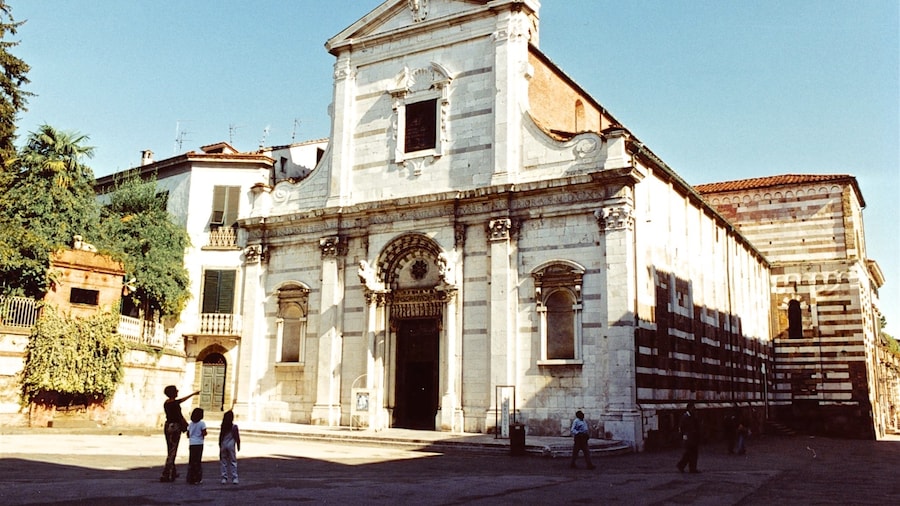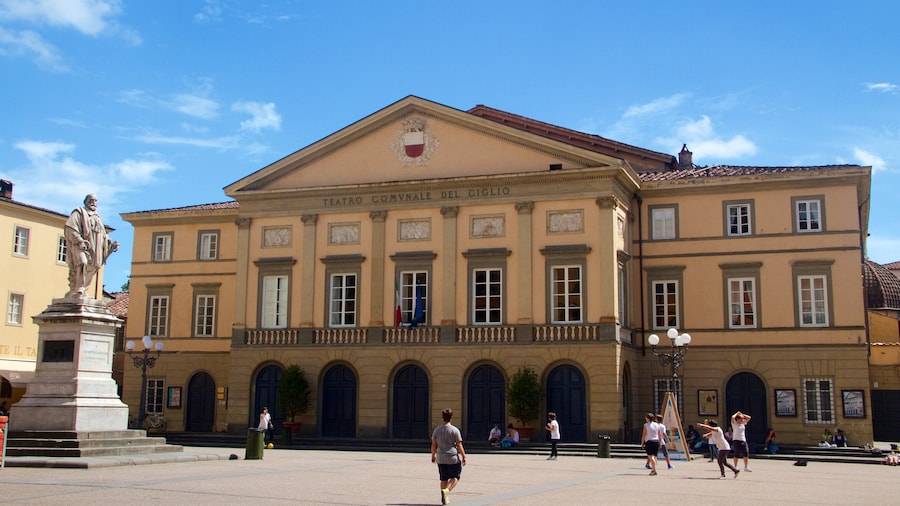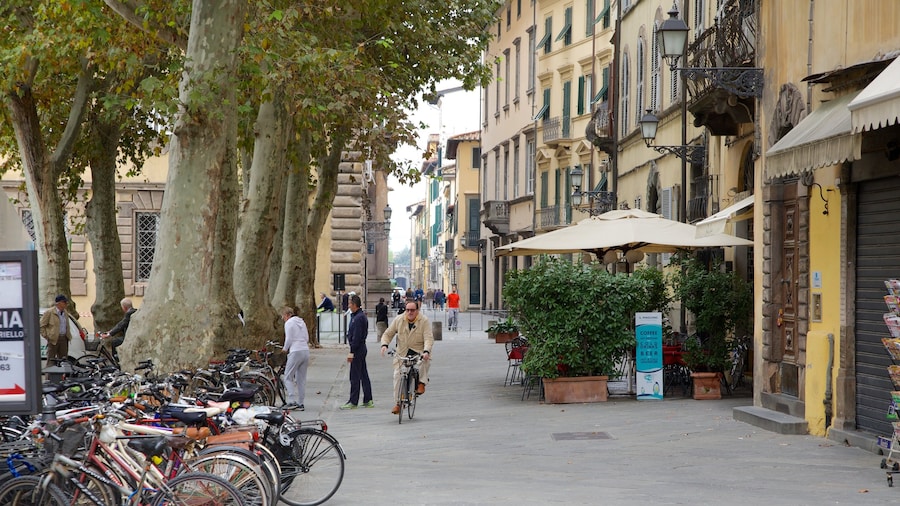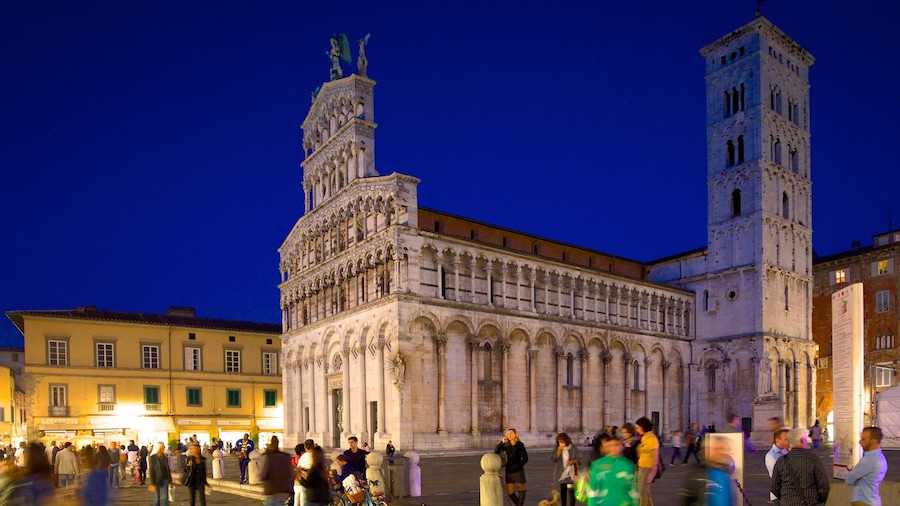The Cathedral of St. Martin has been part of Lucca since the 11th century. The elaborate architectural designs come from renovation work from the 12th century onward as little remains of the original building. Housed within is an ancient venerated crucifix.
Give yourself a few minutes to look over the building's exterior. Start at the upper levels to see columns covered in sculptures or carved with geometric patterns. Look at the unusual capitals with their grotesque figures of animals and humans. Bring a pair of binoculars with you or a camera with a good zoom lens to study the designs up close.
Focus on the three arches of the lower part of the façade and note the asymmetrical design, as the right arch is smaller than the other two. On the right side of the centre arch is a statue of St. Martin to whom the cathedral is dedicated. He is on horseback dividing his cloak with a beggar. The statue is a replica of the 13th-century original that is kept just inside the main entrance. Observe the bas-reliefs decorating the porch, including the depiction of the beheading of St. Regulus by the Goths.
On entering the cathedral go to the small octagonal chapel that contains one of Lucca’s most sacred relics, the Volto Santo di Lucca (Holy Face of Lucca). This is a carved wooden crucifix with a detailed effigy of Jesus Christ. According to legend it was carved by Nicodemus who helped prepare Jesus’s body for burial. Scholars believe the cross to be a copy of the original creation.
Pay a small charge to visit the tomb of Ilaria del Carretto, an Italian noblewoman who died in 1405. The beautiful marble sarcophagus has an effigy of Ilaria lying on the lid with a dog resting at her feet. The sides are decorated with figures of nude cherubs.
The Cathedral of St. Martin is open daily. The church is located at the eastern end of Piazza San Martino, a short walking distance from Lucca’s train station.




